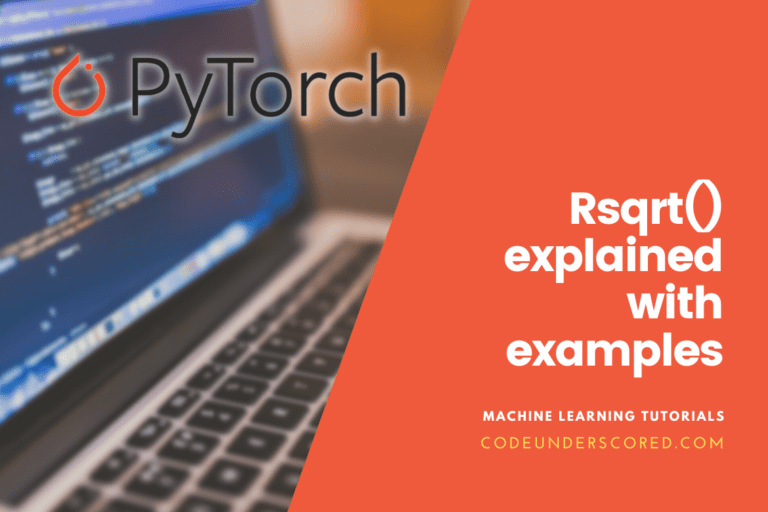Although it might not be that apparent, machine learning algorithms are set to change the landscape of several different industries by automating the tasks currently being performed by human beings. Considering this, data scientists delve deeper into discovering more powerful ML algorithms each day.
Now, if you’re unfamiliar with how machine learning algorithms work, all you need to know about them is that they are capable of learning from data and modifying themselves to do a specific task with more accuracy. You might have seen some of these algorithms in action as well. For instance, YouTube has its own machine learning algorithm that uses your history to recommend videos that you’re more likely to watch.
With that being said, there are three main categories of machine learning algorithms. First of all, we have supervised algorithms used to classify unlabeled data after learning how the labeled data has been classified. On the other hand, there are unsupervised algorithms that extract patterns and features by themselves without the need for any labeled data. So, make sure that you’ve clearly understood them since we will look at the best ML algorithms from each of these categories.
Best Machine Learning Algorithms
Machine learning algorithms can make your job much easier and do great projects for your data science resume. So, let’s cut to the chase and see what machine learning has in store for us.
1. Linear Regression
In case you took a statistics course in college, chances are that you’d have at least heard of this technique. With this supervised ML algorithm’s help, you can see how two variables are dependent on each other. More specifically, you will see how the dependent variable is affected when the independent variable is changed. You should note here that the terms ‘predictor’ and ‘explanatory variable’ are usually used to refer to the dependent variable and independent variable, respectively.
If you’re a beginner, we recommend getting started with this ML algorithm since it’s relatively easier to understand. Other than that, it neither requires that much tuning nor takes a lot of time to run. And, as far as its applications are concerned, you can use the linear regression algorithm for risk assessment, salary forecasting, and estimating sales. If you’re interested in implementing this ML algorithm, you can use either Python (with SciKit and statsmodel libraries) or R (with stats library).
2. K-Means Clustering
This is an unsupervised ML algorithm that has garnered quite some popularity for cluster analysis. K-means clustering works by classifying objects into different clusters based on their similar/dissimilar features and patterns. Considering this, it is optimal to use this machine-learning algorithm to identify crime localities, analyze call record details, and even classify network traffic. Other than that, major search engines such as Google and Yahoo already use this algorithm for clustering web pages based on similarity.
Moreover, if you compare K-means to hierarchical clustering, the former will produce more accurate clusters—that too, in less time. However, before you decide to try out this ML algorithm, note that you’d need the Python Wrapper, Sci-Kit Learn, and Sci-Py libraries for Python and the stats library for R.
3. Naive Bayes Classifier
As its name suggests, this supervised machine learning algorithm works according to the Bayes Theorem. More specifically, the Naive Bayes algorithm considers all the elements of the data set to be independent of each other or, in other words, that modifying one element will not influence the other elements of the set. Although this algorithm sounds pretty simple, it can be applied to even the largest datasets.
The Naive Bayes algorithm can prove extremely helpful for email spam filtering, document categorization, and sentiment analysis when it comes to its applications. Plus, courtesy of this algorithm, you can even put news articles into their respective categories, including sports, entertainment, technology, politics, and so on. Compared to other such models, this ML algorithm doesn’t require a lot of training data. If you’re coding in Python, you’d need the Sci-Kit Learn library for implementing this algorithm.
4. Apriori ML Algorithm
This is another useful unsupervised algorithm that generates association rules with which the items that occur after the occurrence of a certain item can be predicted. These association rules are in the form of if-then statements. When it comes to its working, the Apriori algorithm looks at the prominent items in the dataset and uses them to generate association rules. For instance, this algorithm will tell you that if a person buys a Playstation, they will likely buy an additional controller. The algorithm makes this association by looking at the 1,000 people who bought a Playstation and 700, which also bought another controller.
Some advantages of using this algorithm are that it utilizes large item set properties and can also be implemented easily. In terms of its applications, you will find the Apriori algorithm used in data mining, auto-complete applications, and market basket analysis. For trying out this algorithm, Python users would need the PyPi library, while the arules library is there for R.
5. Support Vector Machine
This supervised machine learning algorithm finds one or several lines (hyperplanes) in the data set to form classes within it. This makes the support vector machine learn more about the dataset, and thus, this algorithm can classify any new data. However, there are non-linear SVMs that do not involve any hyperplanes.
If you want to achieve optimal accuracy for your classification task, your best bet would be to use this algorithm. Using this algorithm will not introduce many strong assumptions while dealing with the data set. Now coming to its applications, different financial institutions perform stockmarket forecasting by using this ML algorithm. Not only that, but SVM is also used in handwriting recognition, facial expression classification, and even speech recognition. To use this algorithm, those coding in Python would need the following libraries: SciKit Learn, LIBSVM, and PyML.
6. Decision Tree
This is a special type of algorithm in that even though the decision tree is technically a supervised ML algorithm, it can still be used for unsupervised learning. A decision tree consists of decision nodes and leaves where the decisions are represented by the leaves and the splitting of data by nodes. Other than that, there are usually two types of decision trees: regression tree and classification tree. The former is used for numerical/continuous target variable or response, while the latter is better suited for the categorical response variable.
Although this ML algorithm comes off as pretty simple, it can do wonders for data mining, face recognition, medical image classification, and stock market prediction. Moreover, beginners should also give a shot to the decision tree algorithm to help them better understand how machine learning really works. However, certain things are to keep in mind while using this algorithm. First of all, if the number of decisions is high, this will have a negative impact on the accuracy of expected outcomes. When applying this algorithm to continuous variables, there could be classification plateaus and instability. For those planning to implement this algorithm, you can do so by the SciPy, and Sci-Kit Learn libraries in Python and caret in R.
7. Logistic Regression
Please don’t get confused by its name: the logistic regression algorithm is for classification tasks instead of regression ones. Its feature space involves a linear model that puts the ‘regression’ in logistic regression. This supervised machine-learning algorithm is used for predicting the target categorical dependent variable by applying a logistic function to the data set. The logistic regression algorithms can be further divided into three types: binary (for 2 possible outcomes), multi-nominal (for 3 or more possible outcomes without ordering), and ordinal (for 3 or more possible outcomes and natural ordering).
Apart from that, this algorithm truly stands out when handling non-linear effects, controlling confounding, and testing interaction. Plus, logistic regression doesn’t demand the independent variables to have normal distribution or equal variance. As for its applications, it is possible to benefit from this algorithm in text editing, hotel booking, credit scoring, and the medical field. With that being said, we don’t recommend using this algorithm for high-dimensional, sparse training data. Also, logistic regression is vulnerable to missing values and outliers and fails to predict continuous outcomes. Implementing this algorithm using the stats package in R and Sci-Kit Learn in Python is possible.
8. Random Forest
If you know how decision trees work, you’re only halfway there to understand the random forest algorithm’s working. Basically, this unsupervised algorithm uses multiple decision trees to achieve more stable and accurate predictions. Also, as the trees grow, so does the model’s randomness. The random forest algorithm can also be used for both regression and classification tasks.
If your data set either has noise or is large in volume, your best bet would be to go for this machine learning algorithm. Not only that, but the random forest also gives better classification accuracy than most algorithms. When it comes to its applications, this algorithm can be used in fields such as e-commerce, the stock market, medicines, and even the banking sector. However, it would help if you refrained from using the random forest for real-time predictions. So, if you feel like implementing this algorithm, you’d be needing the Sci-Kit Learn library in Python and the randomForest library in R.
9. PCA
Short for Principal Component Analysis, this unsupervised machine learning algorithm makes principal components based on the maximum variance in the data so that the data dimensionality is reduced and maximum variation is kept. Accordingly, with this algorithm’s help, data sciences can understand the data in an easier way.
You’ll absolutely love PCA if you’re trying to make sense out of overly complex data with high dimensions. Moreover, this algorithm can prove to be quite useful in domains such as image compression, computer vision, and facial recognition. With that being said, while using this algorithm, you need to carefully select the number of principal components since failure in doing so could lead to data loss. A python package named ‘pca’ allows users to make use of this algorithm. As for R, you can use the stats library.
10. CART
Classification and regression tree is a supervised ML algorithm based on decision trees. However, when it comes to CART, the non-terminal nodes consist of the root node and the internal node, whereas the leaf nodes are part of the terminal nodes. Input variables are represented by the non-terminal nodes, while the leaf nodes’ output variable. This algorithm makes predictions by walking the splits of the tree to get to each leaf node and output its value.
As for its applications, the CART algorithm can be used to classify blood donors, examine hepatitis disease diagnosis, and predict the weather. With that being said, if you want to utilize this algorithm effectively, you must correctly set its tuning parameters, which include the split number or tree depth. Apart from that, the random forest algorithm also usually proves to be more robust than CART.
Conclusion
Regardless of whether you’re genuinely interested in learning artificial intelligence or want to get a taste of it, the machine learning algorithms mentioned in this list can show you some of the wonders this field has in store for the world. And, as you could see, both supervised and unsupervised ML algorithms are just as useful and have their utilization in various domains. Lastly, if you’ve already given a shot to any one of the algorithms on our list, feel free to tell us about your experience in the comment section below. Please stay connected with us as we will be going in-depth on each of these algorithms in the near future articles.







